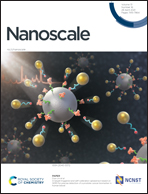A yolk–shell Fe3O4@void@carbon nanochain as shuttle effect suppressive and volume-change accommodating sulfur host for long-life lithium–sulfur batteries†
Abstract
A lithium–sulfur (Li–S) battery is considered a promising next-generation secondary battery owing to its high theoretical capacity and energy density. However, the volume change and poor conductivity of sulfur, and the shuttle effect, restrict its practical applications. Herein, we develop a yolk–shell Fe3O4@S@C nanochain as the Li–S battery cathode in which sulfur is encapsulated between the Fe3O4 core and the carbon shell. After cycling 500 times at 0.2C, the Fe3O4@S@C nanochains exhibit a stable capacity of 625 mA h g−1 and a coulombic efficiency exceeding 99.8%. When measuring at temperatures of −5 and 45 °C, the capacities remain stable, and a well-reversible rate performance under repeated testing for three rounds is also achieved. Furthermore, density functional theory (DFT) calculations show large adsorption energies of Fe3O4 towards polysulfides, indicating the capability of suppressing the shuttle effect during long-term charge and discharge.



 Please wait while we load your content...
Please wait while we load your content...